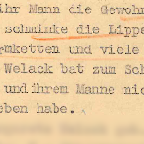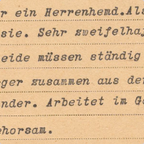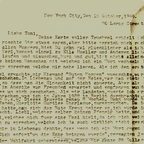"Vorbeugungshaft"

© Berlin State Archives.
_Richters preventive imprisonment warrant

Private photography, © Berlin State Archives.
Content Warning: This text discusses murder.
This "Vorbeugungshaftbefehl" (preventive arrest warrant) was issued by the Berlin criminal police's "Kriminalinspektion Vorbeugung" (Criminal Inspectorate Prevention), shortly before house servant _Richters release from Berlin Tegel prison on May 18th 1942. They had been in prison because they had been found guilty of Section 175 of the criminal code. Even if the prison staff at Berlin Tegel saw no reason to continue to imprison _Richter, Kriminalinspektion Vorbeugung was of a different opinion. _Richter was further arrested, this time in Sachsenhausen concentration camp. Less than three months later, on July 28, they were murdered by the SS in a killing operation targeting internees who were understood to be homosexual in the clinker factory of Sachsenhausen concentration camp.
“Vorbeugungshaft” (preventive imprisonment) was an instrument of the criminal police under Nazi rule. Through it, the criminal police was able to imprison people without a court order and for an indefinite period of time, often in a concentration camp. “Vorbeugungshaft” operated in a legal vacuum because no legal steps could be taken against it. Most often it was used when a person was expected to be released from prison after serving a sentence, for example as a result of a court case. If Kriminalinspektion Vorbeugung deemed a person to be a threat to public safety or not be living in accordance with Nazi ideology, that person was immediately arrested again.






























